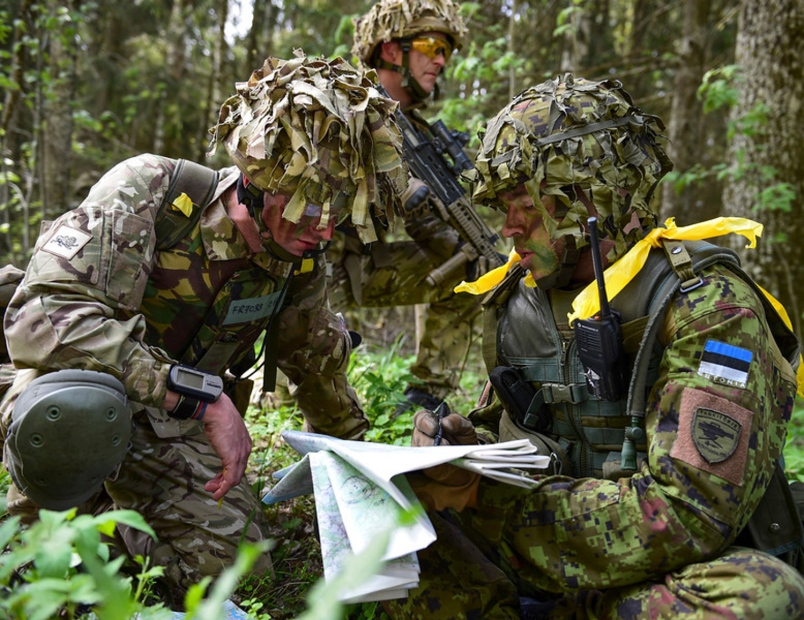My latest article in TNI summarizing key aspects of Russian military power and the balance in Europe.
The current confrontation in U.S.-Russia relations, and increasing antagonism in the relationship, makes it difficult to separate structural changes in the European security environment from politically charged sources of conflict. Yet these changes have been profound, dating back to Russian military reforms launched in late 2008. They have serious implications for the new U.S. administration. The principal factors are Russia’s revival of the military as an instrument of national power, the unsettled war in Ukraine, and NATO’s changing posture to counter a perceived threat from Moscow’s machinations.
Seeking an improved, or perhaps simply more stable, relationship with Russia from a “position of strength” requires understanding the new military balance in Europe, the evolution of Russia’s military capabilities, and its evolving force posture. Independent of whether the proximate causes of hostility in U.S.-Russian relations are resolved, or there is a change in the broader atmospherics of the relationship, the United States must develop a strategy and policy for dealing with Russia, grounded not in optimism but in hard military realities. The previous administration suffered from a severe rhetoric-to-strategy gap, contesting Russia politically but losing strategically.
It would be safe to assume that distrust will continue to dominate NATO-Russia relations, and that even if interactions on the whole may improve—arguably, they cannot worsen—they may not produce concrete results in short order. A fact-based approach to the security situation in Europe should inform further changes in U.S. force structure and posture. Unfortunately, for the past two years discourse on this subject has been only marginally informed by reality, with policy advocacy and agendas driving analysis of the Russian military threat. Debate has often taken place either in a fact-free zone, or with new information overconsumed by a policy establishment long unaccustomed to dealing with Russia as a serious adversary. The United States has not been winning the geopolitical confrontation with Russia of late; nor has it come up with a vision for how to change the dynamics in this adversarial relationship.
Like its predecessor, the new administration will have to formulate its Russia policy in the aftermath of a crisis in European security; this is an opportunity either to make fresh mistakes, or to get things right. To succeed, the administration must base its strategy not on individual capabilities that Russia has, the individual concerns of proximate NATO members, or the designs of different constituencies within the U.S. policy establishment, but on a coherent understanding of the security dynamics in Europe and Russian military power.
Russia Has Been Busy
The Russian military that the United States faces in 2017 is not the poorly equipped and uncoordinated force that invaded Georgia in August of 2008. This is why the magnitude and potential impact of the current crisis is far greater than that inherited by the Obama administration in 2009. Following reforms launched in October 2008, and a modernization program in 2011 valued at $670 billion, the armed forces have become one of Russia’s most reliable instruments of national power. Russia disbanded the useless mass-mobilization army of the Soviet Union, consolidated what was worthwhile, and reconstituted a much smaller, but more capable force. The overall size of Russia’s armed forces continues to increase, numbering over nine hundred thousand today, while the state armament program continues to replace aging equipment throughout the force with new or modernized variants.
The reform process and a stable infusion of much-needed capital have restored war-fighting potential to the Russian military, though incomplete, and unevenly applied to the force. Moscow’s ability to sustain this spending is very much in question, faced with low oil prices, economic recession and Western sanctions. However, Russia has made the choice to defend defense spending and enact cuts elsewhere. Reductions will be made to the procurement program, but Moscow will maintain spending on nuclear modernization and long-range standoff weapons, trying to sustain the force at current levels In reality, loss of access to key components from Ukrainian and European defense industries created the most serious setbacks to Russian defense modernization (delays of about five to seven years in 2014).
Russia’s defense budget steadily climbed from to a peak of 4.2 percent of GDP in 2015. Since then, it has been in relative decline, though likely to remain above 3.7 percent, well beyond the spending levels of America’s European allies. This level of expenditure is probably unsustainable for the Russian budget, inevitably forcing its leadership to choose between weapons procurement, operations and the quality of personnel. However, the inertia of the current modernization program will have lasting effects well into the 2020s.
Bottom line, Russia can sustain this military with judicious reductions, and even if the funding base collapses, the dramatic turnaround in its armed forces is not a temporary bounce that the United States must ride out. Russia’s General Staff has been focused on drilling the force with snap readiness checks, joint exercises, large movements and annual operational-strategic exercises. From its air force to the nuclear-powered submarines of its navy, the Russian military has quickly clawed back operational readiness not seen since the 1990s.
You can read the rest here.





